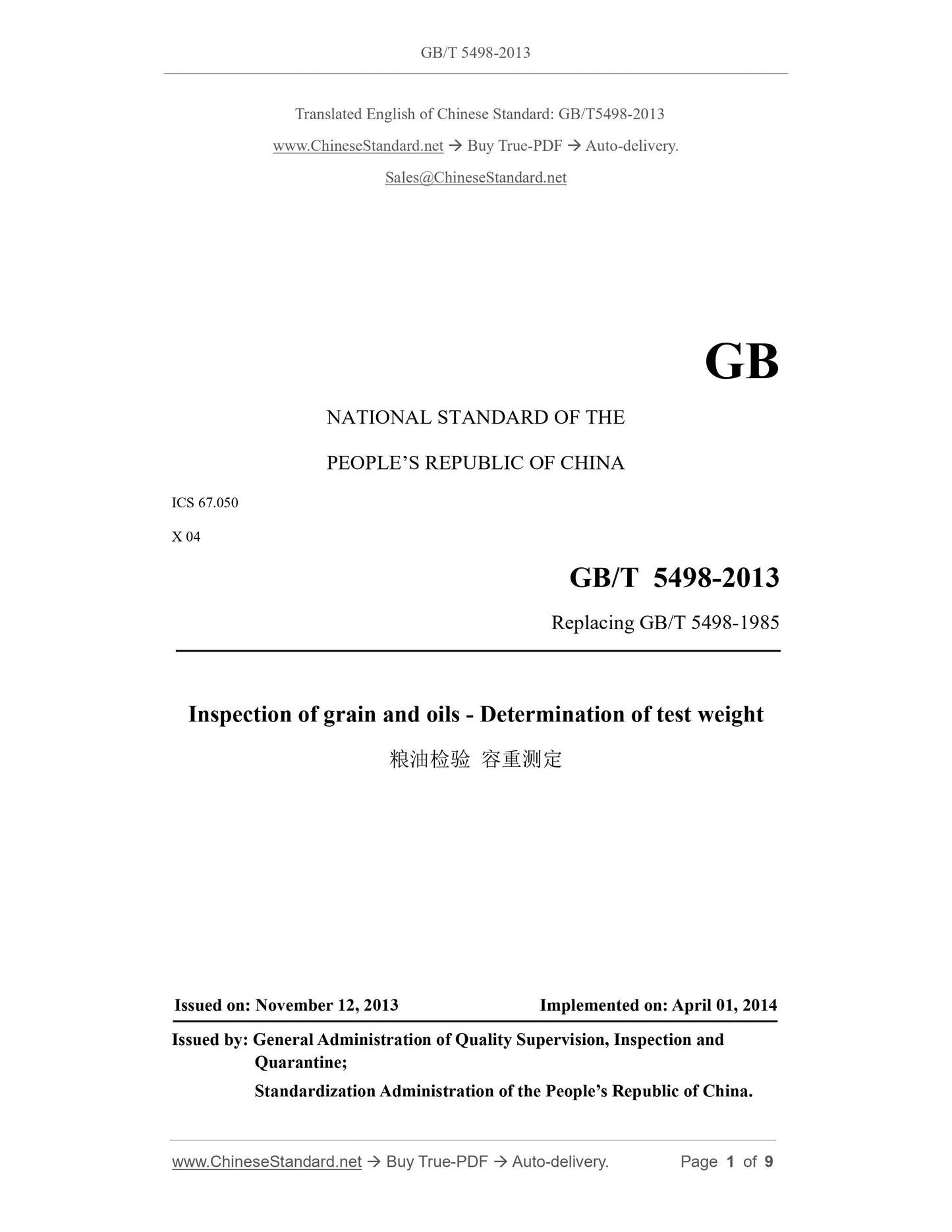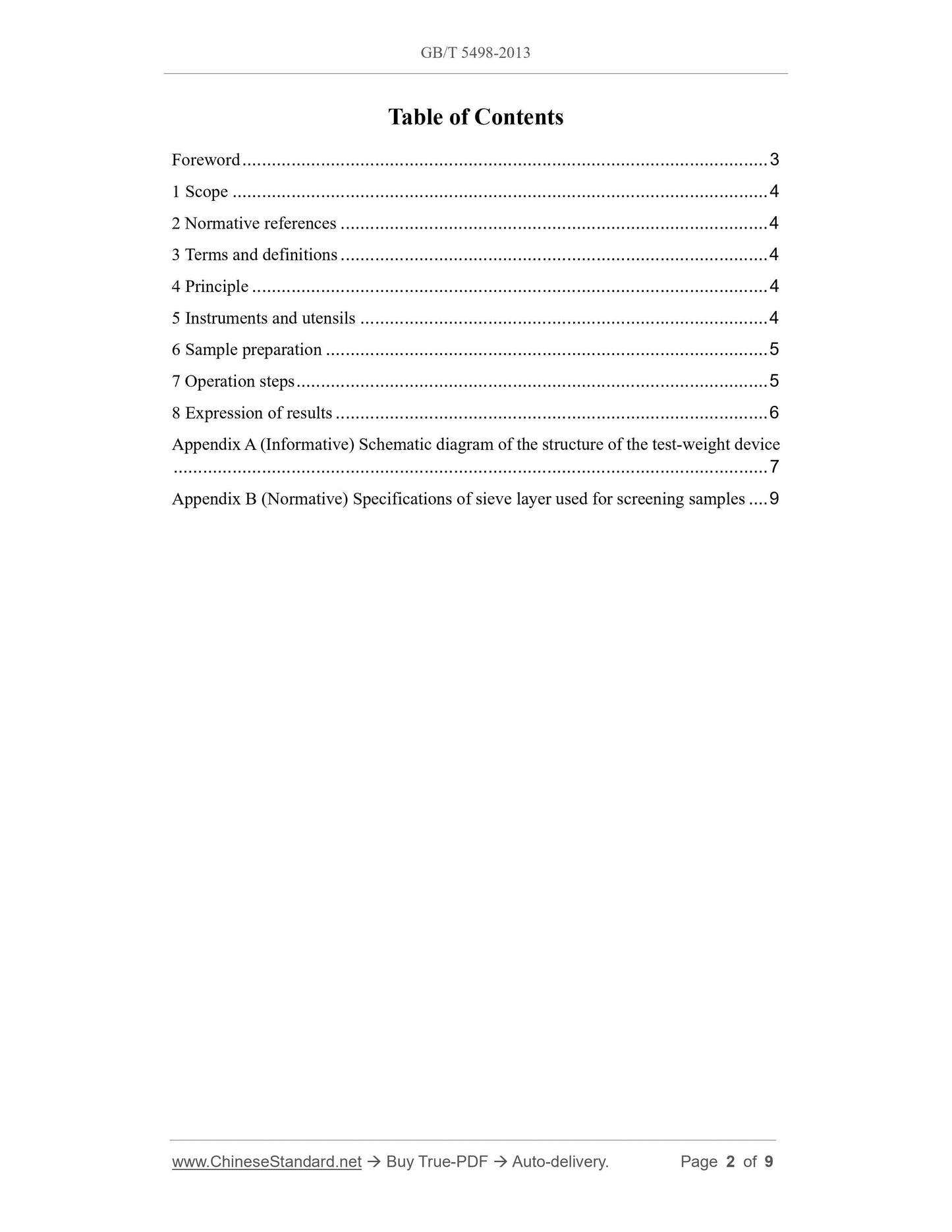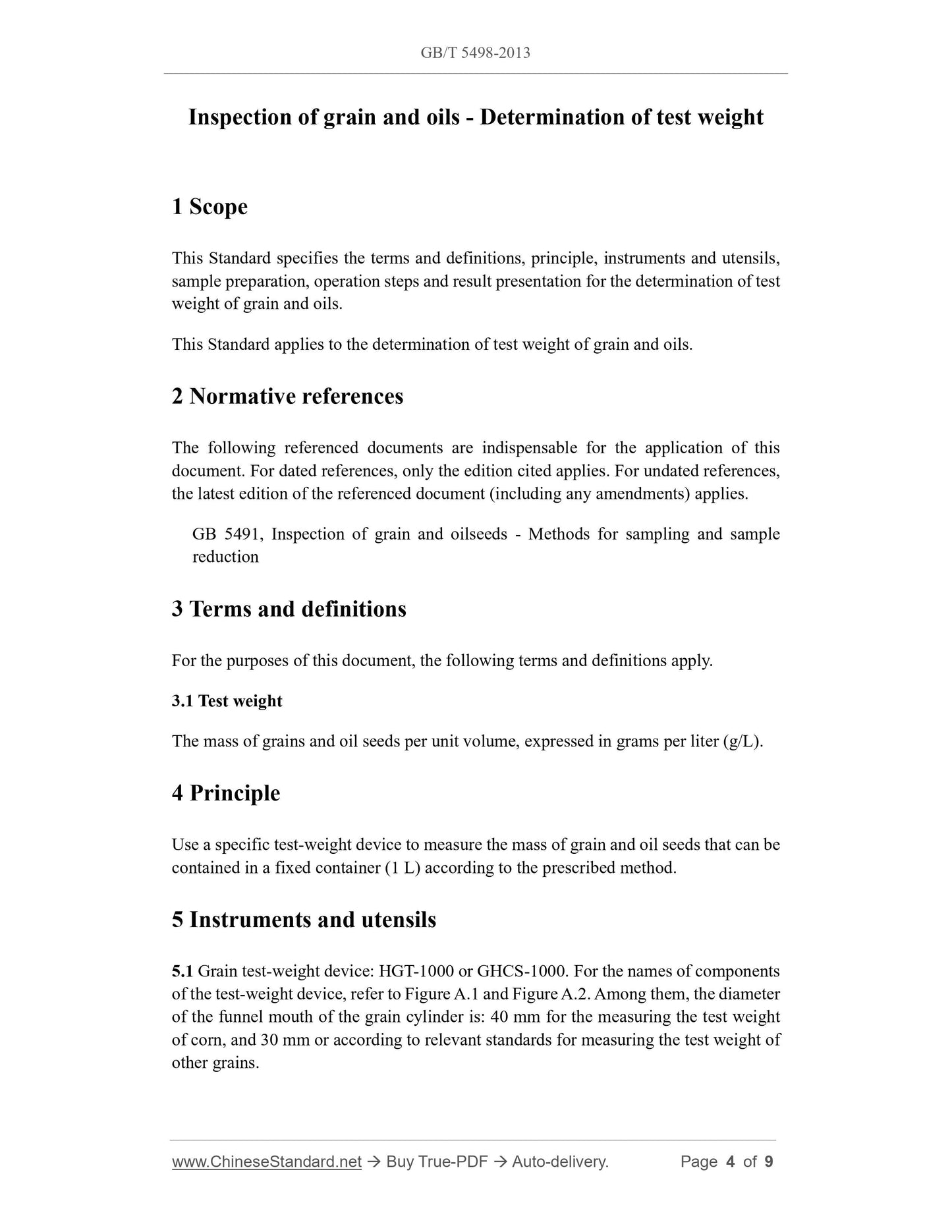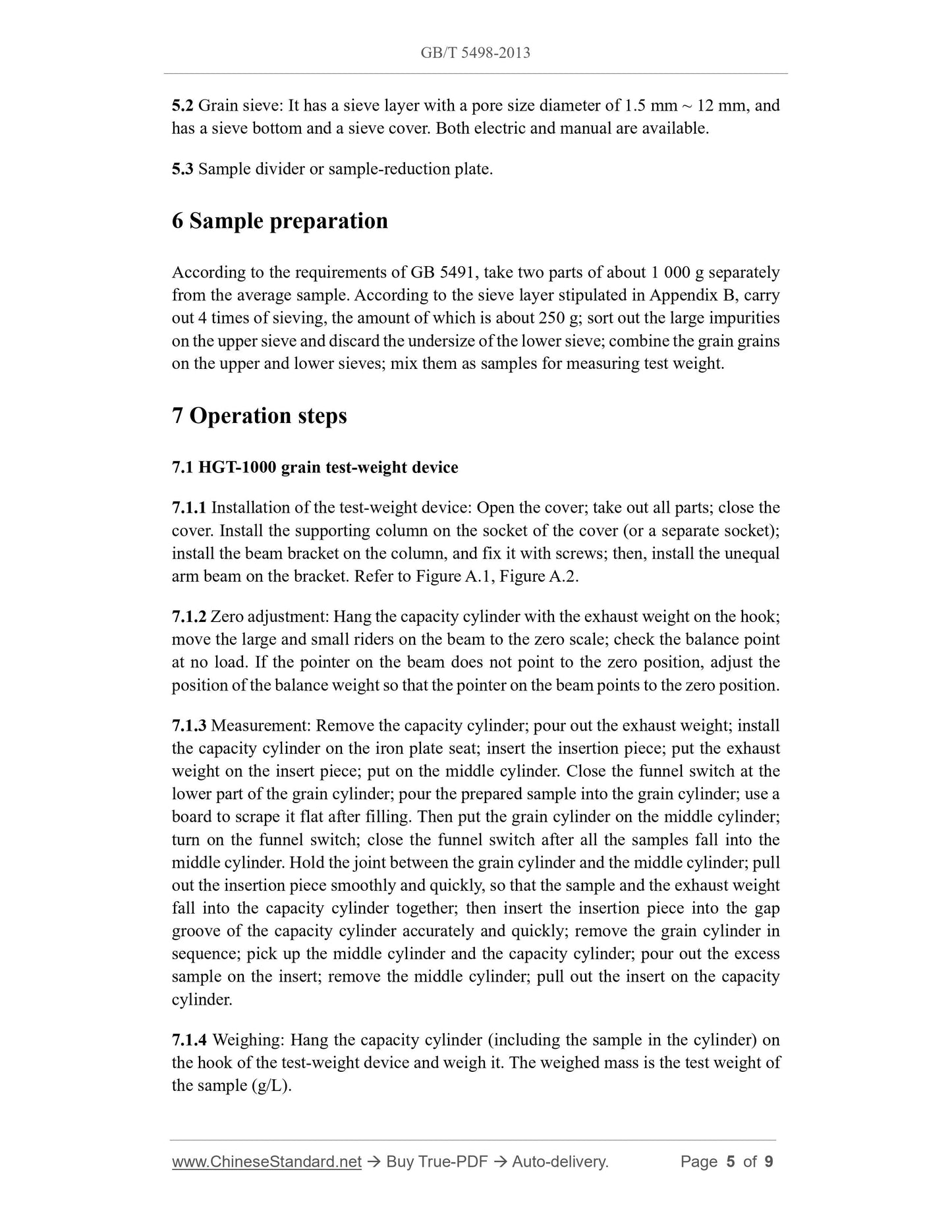1
/
of
4
www.ChineseStandard.us -- Field Test Asia Pte. Ltd.
GB/T 5498-2013 English PDF (GB/T5498-2013)
GB/T 5498-2013 English PDF (GB/T5498-2013)
Regular price
$130.00
Regular price
Sale price
$130.00
Unit price
/
per
Shipping calculated at checkout.
Couldn't load pickup availability
GB/T 5498-2013: Inspection of grain and oils -- Determination of test weight
Delivery: 9 seconds. Download (and Email) true-PDF + Invoice.Get Quotation: Click GB/T 5498-2013 (Self-service in 1-minute)
Newer / historical versions: GB/T 5498-2013
Preview True-PDF
Scope
This Standard specifies the terms and definitions, principle, instruments and utensils,sample preparation, operation steps and result presentation for the determination of test
weight of grain and oils.
This Standard applies to the determination of test weight of grain and oils.
Basic Data
| Standard ID | GB/T 5498-2013 (GB/T5498-2013) |
| Description (Translated English) | Inspection of grain and oils -- Determination of test weight |
| Sector / Industry | National Standard (Recommended) |
| Classification of Chinese Standard | X04 |
| Classification of International Standard | 67.050 |
| Word Count Estimation | 7,716 |
| Older Standard (superseded by this standard) | GB/T 5498-1985 |
| Quoted Standard | GB 5491 |
| Regulation (derived from) | National Standards Bulletin No. 22 of 2013 |
| Issuing agency(ies) | General Administration of Quality Supervision, Inspection and Quarantine of the People's Republic of China, Standardization Administration of the People's Republic of China |
| Summary | This standard specifies the food, fuel density measurement terminology and definitions, principles, apparatus and appliances, sample preparation steps and the results said. This standard applies to food, bulk density fuel. |
Share







